Interesting Facts About Bears You Never Knew
Did you know that bears possess some truly remarkable adaptations? From pandas' elongated wrist bones acting as thumbs to polar bears' partially webbed forepaws for efficient swimming, these creatures are full of surprises. Bears communicate through vocalizations, body language, and scent marking, showcasing complex social behaviors. Their hibernation abilities are equally impressive, with some species surviving up to 100 days without food or water. Even bear coloration can be unexpected, with white spirit bears and spectacled bears sporting distinctive markings. Climate change is now leading to the emergence of grolar bears, hybrids between polar and grizzly bears. The world of bears is far more diverse and fascinating than you might have imagined.
This post may contain affiliate links. If you make a purchase through these links, I may earn a commission at no additional cost to you. Additionally, portions of this post may be generated using artificial intelligence (AI) technology. While we strive for accuracy, please be aware that AI-generated content may not always be perfect and should be fact-checked when necessary.
The Spatula Scoops
- Pandas have elongated wrist bones acting as thumbs, helping them grip bamboo and consume 40 pounds daily.
- Spirit bears, a black bear subspecies, can be born white due to a recessive gene.
- Sloth bears have specialized lips that create a vacuum for efficiently slurping insects.
- Bears can hibernate for up to 100 days, with their heart rate slowing to a few beats per minute.
- Grolar bears, hybrids of polar and grizzly bears, are emerging due to climate change-induced habitat overlap.
Unique Bear Species Adaptations
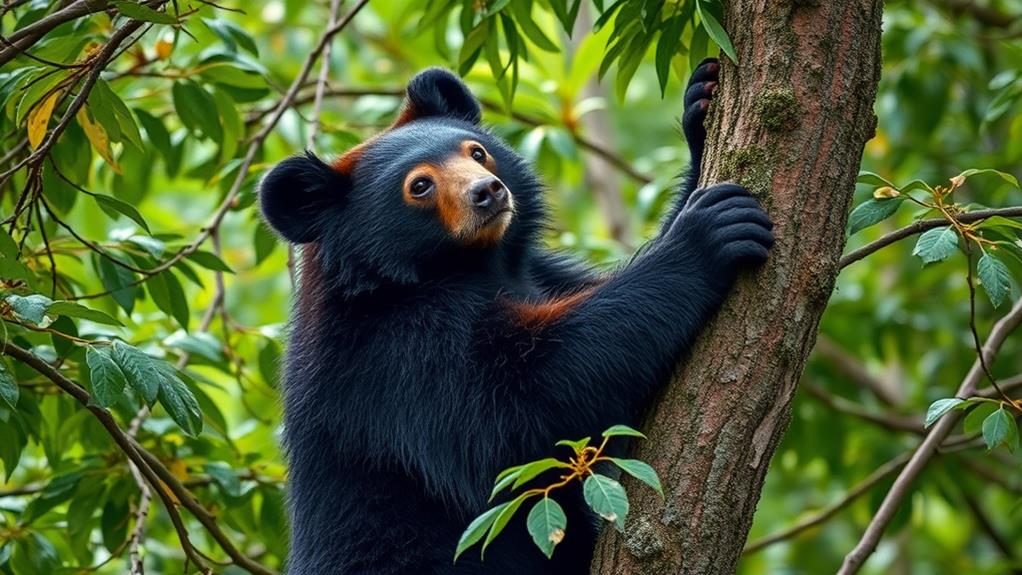
Nature's ingenuity shines through in the remarkable adaptations of various bear species. You'll find that bears have evolved unique features to thrive in their environments. Take pandas, for instance. They've developed an elongated wrist bone that functions like a thumb, allowing them to grip bamboo efficiently and consume up to 40 pounds daily.
Polar bears, classified as marine mammals, have partially webbed forepaws that enable them to swim at speeds of up to 6 mph. They rely on a thick layer of blubber for insulation and buoyancy, showcasing their adaptation to Arctic waters.
Sloth bears have specialized lips that create a vacuum, perfect for slurping up insects with ease. This unique adaptation produces a distinctive sound as they feed.
In the Southern Hemisphere, you'll find the Andean bear, recognizable by its spectacle-like markings around the eyes. It's the only bear species in this region, playing a vital role in its ecosystem.
Lastly, the spirit bear, a subspecies of black bears, can be born white due to a recessive gene. This unique adaptation holds significant cultural importance for First Nations communities.
Bear Color Variations
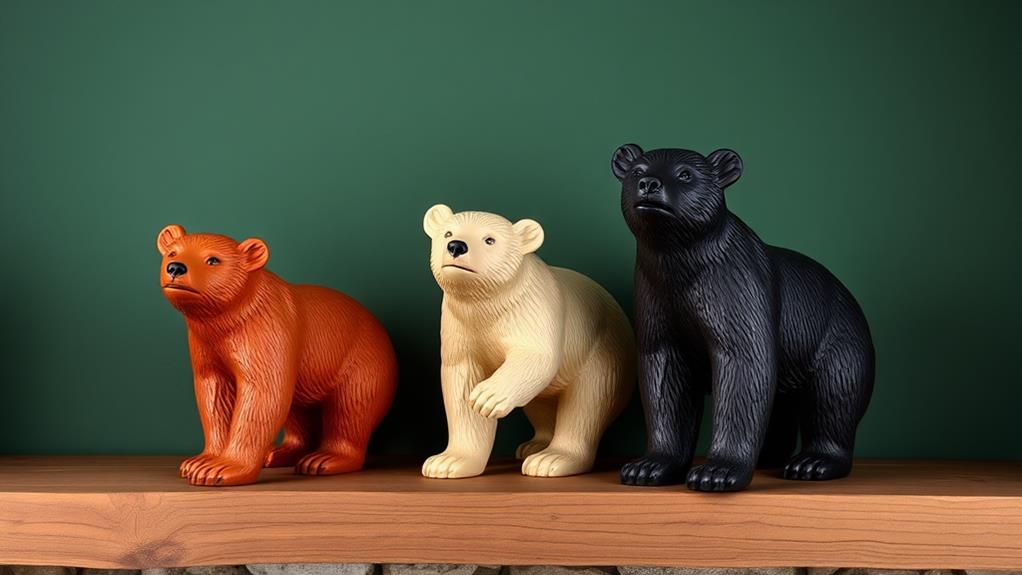
You might be surprised to learn that bears aren't always the colors you'd expect. Bear color variations are more diverse than many people realize. For instance, black bears aren't always black. In fact, about half of Western black bears sport lighter shades, ranging from brown to blonde. Environmental factors play a significant role in these variations, influencing the adaptability of bears across different habitats.
The Kermode bear, a subspecies of the North American black bear, showcases an interesting color variation. About 10-25% of these bears have white or cream-colored fur, earning them the nickname "spirit bears." These unique bears hold cultural significance for First Nations peoples.
Here's a quick rundown of some fascinating bear color facts:
- Only 97% of northeastern black bears are truly black
- Spectacled bears have distinctive cream markings around their eyes
- Polar bears have black skin beneath their transparent fur
- Bear fur color is influenced by melanin and environmental factors
These color variations demonstrate the remarkable adaptability of bears to their diverse environments. From the icy Arctic to lush forests, bears have evolved to blend in and thrive in their respective habitats.
Bear Communication and Behavior
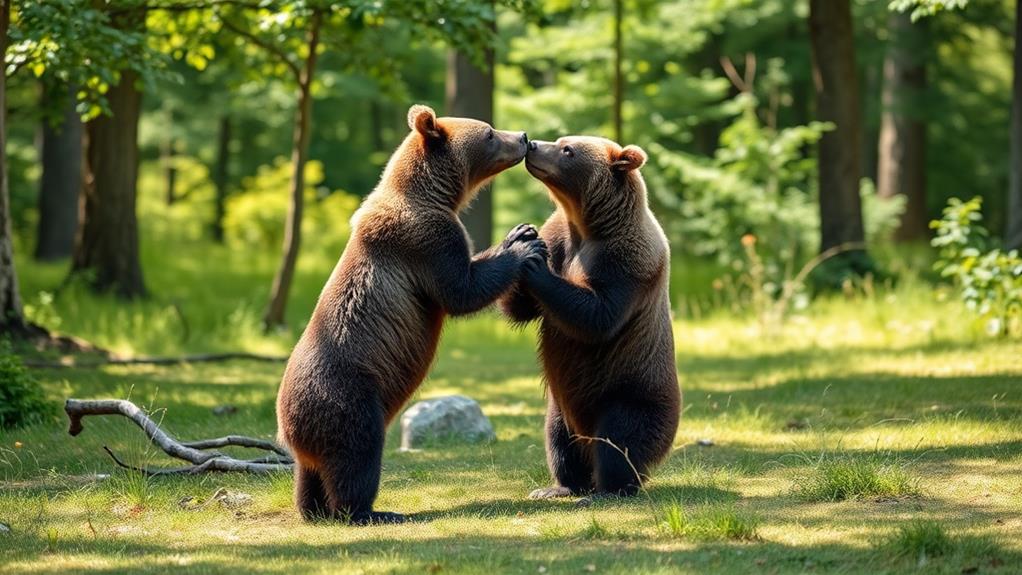
While they may seem like solitary creatures, bears have developed sophisticated ways to communicate with each other. You might be surprised to learn that bear communication involves a diverse range of methods. Their vocalizations include growls, huffs, and roars, each conveying different emotions and intentions. These sounds can express aggression or annoyance, helping bears navigate their social interactions.
Body language is another important aspect of bear communication. You'll find bears pawing, shaking, and posturing to convey their intentions to other bears. This non-verbal communication is essential for establishing dominance or avoiding conflicts.
Scent marking plays a significant role in bear communication. Bears leave scent trails on trees and other surfaces to mark their territory and attract potential mates. This olfactory communication helps them navigate their environment and interact with other bears indirectly.
Cubs have their own unique vocalizations to maintain contact with their mothers. These sounds are important for ensuring their safety and fostering strong bonds, especially during foraging activities. Although bears are generally solitary, they exhibit limited social interactions during mating seasons and when raising cubs, demonstrating their adaptive communication strategies for survival.
Hibernation Patterns and Physiology
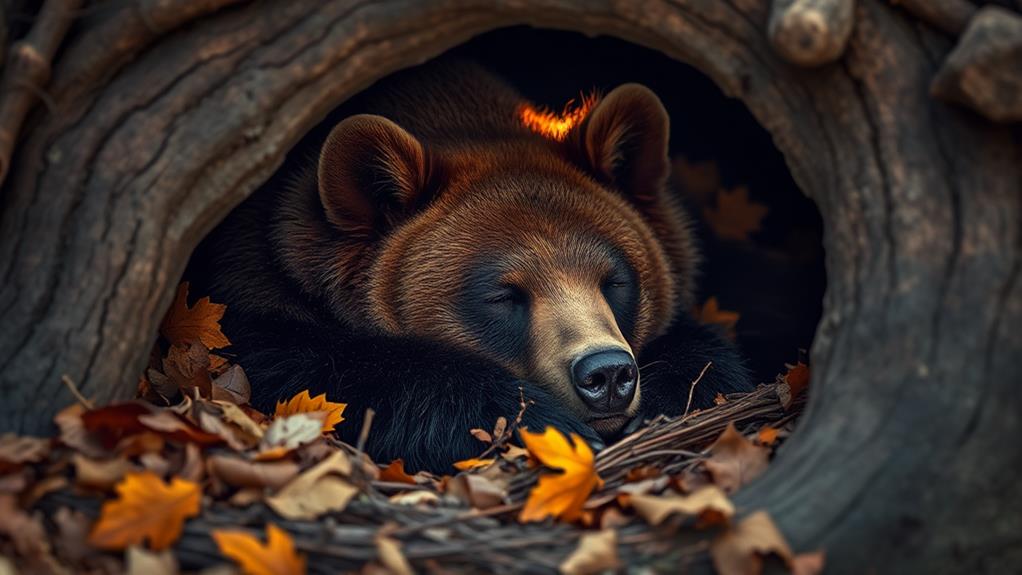
Bears' remarkable ability to hibernate sets them apart from many other mammals. During winter, these incredible creatures can enter a state of dormancy for up to 100 days, depending on the species and environment. As they hibernate, bears undergo significant physiological adaptations that allow them to survive harsh conditions.
Here's what happens during a bear's hibernation:
- Body temperature drops dramatically
- Heart rate slows to just a few beats per minute
- Metabolism decreases, conserving energy
- Fat reserves are utilized for sustenance
You'll find that bears prepare for hibernation by building up fat reserves and growing thick fur for insulation. This combination helps them endure long periods without food or water. Notably, female bears can even give birth to cubs while hibernating, nursing them for the first three months of their lives.
It's worth noting that hibernation patterns vary based on geographic location. Bears in warmer climates may not hibernate at all if food is available year-round. This adaptability showcases the remarkable nature of these animals and their ability to adjust to different environments. Understanding these hibernation patterns and physiology gives you insight into the fascinating world of bears and their survival strategies.
Are There Any Connections Between Bear Diets and GMOs?
Bears are omnivores, consuming everything from berries to fish, but their diets could indirectly link to genetically modified organisms through food chains. Interesting facts about gmos reveal their influence on crops, which might impact wildlife-consuming plants or prey feeding on GMO-based products, creating subtle ecological connections worth investigating.
Emerging Bear Hybrids
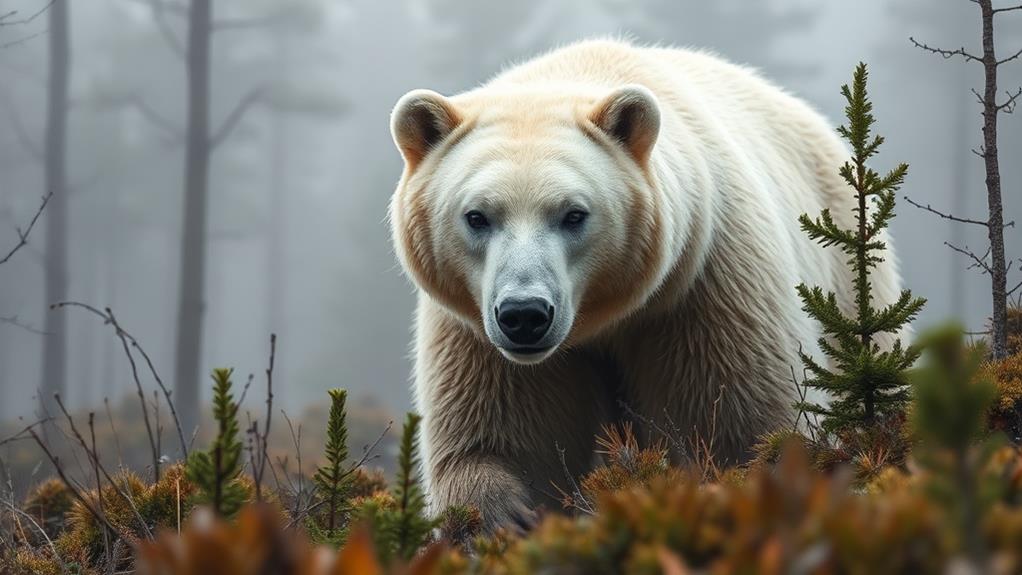
In recent years, a fascinating phenomenon has emerged in the world of bears: the rise of hybrid species. You've probably heard of polar bears and grizzly bears, but did you know that these two bear species can interbreed? The result is a hybrid called a grolar bear, also known as a pizzly bear. These unique creatures were first confirmed in 2006 and have since captured the attention of scientists and nature enthusiasts alike.
Grolar bears are a prime example of how climate change is affecting ecosystem dynamics in the Arctic. As polar ice melts, the habitats of polar bears and grizzlies are increasingly overlapping, leading to more opportunities for hybridization. These hybrid bears inherit traits from both parent species, often appearing smaller than polar bears but larger than grizzlies.
What's particularly interesting about grolar bears is that they're fertile, meaning they can contribute to the genetic diversity of both polar and grizzly bear populations. This hybridization highlights the complex ways in which environmental changes are impacting species evolution in the Arctic, providing a unique window into the ongoing effects of our changing climate.
Frequently Asked Questions
What Are 10 Interesting Facts About Black Bears?
You might be surprised to learn that black bears aren't always black. They can have blue-gray, brown, or even white coats. These intelligent creatures can consume up to 20,000 calories daily before hibernation, eating everything from grass to small mammals. They're excellent problem-solvers and can hibernate for up to 7 months. Black bears are mostly solitary, but mothers teach their cubs valuable skills. When standing, they can reach 7 feet tall and weigh up to 600 pounds.
What Are the Unique Abilities of Bears?
You'll be amazed by the unique abilities of bears. They've got an incredible sense of smell, detecting food from up to 32 kilometers away. Polar bears, with their partially webbed forepaws, can swim at 6 mph in icy waters. Sloth bears use their lips like a vacuum to suck up insects. Giant pandas have a thumb-like wrist bone for gripping bamboo. Black bears adapt to their environment with various coat colors. These abilities help bears thrive in diverse habitats.
What Are 10 Interesting Facts About Grizzly Bears?
As imposing as a mountain, grizzly bears captivate your imagination. You'll be amazed to learn that these giants can sprint up to 35 mph, despite their bulk. They're incredibly smart, using tools and solving puzzles. Grizzlies have a bite force of 1,160 psi, stronger than a tiger's. Their fur isn't actually brown, but often has silver-tipped hairs. They're excellent swimmers and can climb trees when young. Grizzlies have been known to eat 90 pounds of food daily during pre-hibernation.
What Is the Most Uncommon Bear?
You might be surprised to learn that the most uncommon bear is the Kermode bear, also known as the spirit bear. It's a rare subspecies of the American black bear found only in specific coastal regions of British Columbia, Canada. What makes them unique is a genetic trait causing 10-25% of their population to have white or cream-colored fur. With only about 400 spirit bears remaining in the wild, they're one of the rarest bear species you'll ever encounter.





